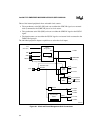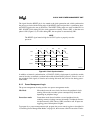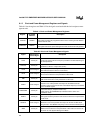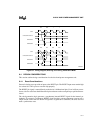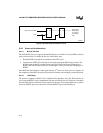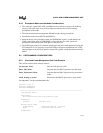
Intel386™ EX EMBEDDED MICROPROCESSOR USER’S MANUAL
8-6
8.1.3 Clock and Power Management Registers and Signals
Table 8-1 lists the registers and Table 8-2 list the signals associated with the clock and power man-
agement unit.
Table 8-1. Clock and Power Management Registers
Register
Expanded
Address
Description
CLKPRS 0F804H
Clock Prescale:
This register contains the programmed divisor value used to generate PSCLK
from the internal clock.
PWRCON 0F800H
Power Control:
This register selects the power management mode and internal ready options.
Table 8-2. Clock and Power Management Signals
Signal
Device Pin or
Internal Signal
Description
CLK2 Device pin
Input Clock:
Connect an external clock to this pin to provide the fundamental timing for
the microprocessor.
CLKOUT Device pin
Output Clock:
CLKOUT is a Phase 1 output clock (PH1P)
IDLE Internal signal
Idle Output (to the Watchdog Timer Unit):
IDLE indicates that the device is in idle mode.
INTR Internal signal
Interrupt Input (from the Interrupt Control Unit):
INT causes the device to exit powerdown or idle mode.
NMI Device pin
Nonmaskable Interrupt Input:
NMI causes the device to exit powerdown or idle mode.
PSCLK Internal signal
Prescaled Clock Output:
PSCLK is one of two possible clock inputs for the SSIO baud-rate
generator and the Timer/counter Unit. The PSCLK frequency is controlled
by the CLKPRS register.
PWRDOWN Device pin
Powerdown Output (multiplexed with P3.6):
A high state on the PWRDOWN pin indicates that the device is in
powerdown mode.
RESET Device pin
System Reset Input:
This signal resets the processor and causes the device to exit powerdown
or idle mode.
SERCLK Internal signal
Serial Clock Output:
SERCLK is one of two possible clock inputs for the SIO or SSIO baud-
rate generator. The SERCLK frequency is one-fourth the CLK2 frequency.
SMI# Device pin
System Management Interrupt Input:
SMI# causes the device to exit powerdown or idle mode and causes the
processor to enter System Management Mode.







